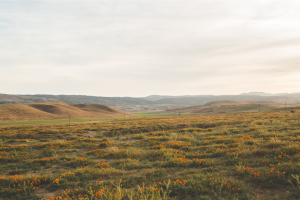Most of us probably live in a pretty fast-paced environment on a regular basis. And we’ve added in a global pandemic which has its own challenges and changes to our lives. Add the current political climate to the busyness of everyday life and pandemic and it seems we have a swirling mess of chaos, instability, loneliness and change. And you’re not alone in all of those feelings. In a study by the CDC1, in June of 2020 feelings and symptoms of anxiety rose three times what the rate had been in the previous year at the same time. People who had never experienced feelings of anxiety at any time in their lives are experiencing them now.
(We understand that anxiety is a real mental health condition and these suggestions and ideas in no way replace any type of therapy or medication. Also, if you’re experiencing more serious anxiety or depression you may find some of these suggestions are too difficult to engage and we honor you and where you are in your journey.)
Living as whole – physical, mental, emotional and spiritual – human beings, we know that each of these unique parts of ourselves impacts another. Here are six ways that we would like to offer to invite peace into your life.
1. Breathe
When was the last time you took a deep breath? If you can’t remember, it has probably been too long. Take a moment right now to close your eyes and take a deep breath or two. God has given us our breath. Breath sustains our life. As we move throughout the experiences of the day our breathing may begin to reflect that experience and become shallow and rapid. Psychologists have found that breathing practice is effective in fighting anxiety, depression and stress2. Taking a deep breath helps to calm our nervous system, it gives us a place to pause our thoughts and pray. Taking a deep breath helps us to acknowledge our humanity within ourselves and others to the glory of God.
How do you feel taking a deep breath? Do you notice anything else happening as you take several deep breaths in a row? What would it look like to offer gratitude to God for your breath?
2. Rest
In Mark 6, Jesus and his apostles had gathered together and they are telling Jesus all they had done and taught. As they were gathered people just kept coming to them. So many people kept coming that they didn’t even have time to eat and Jesus said, “Come with me by yourselves to a quiet place and get some rest.” Let’s read that again, “Come with me by yourselves to a quiet place and get some rest.” Jesus is making space for his disciples to take a break and tend to their own well-being. Jesus offers us space and rest.
How does it make you feel that the same rest that is offered to the disciples is offered to you? What does resting look like for you? What are some ways you can begin to implement rest, even just a few minutes to start, each day?
3. Silence
There are a lot of physical health benefits to spending time in silence throughout your day, including better sleep and lowering your blood pressure, but as we know, we’re far more complex beings. Tied to our physical health are our soul and the Spirit that indwells us. In Psalm 62, David writes about his soul waiting in silence before God, mentioning it repeatedly and finding hope, refuge and strength. Becoming silent may be more difficult than it seems on the surface. Here is one way to practice silence. Take a deep breath and close your eyes. You may see flashes of light or color, images and your brain may be swirling with a lot of thoughts. Acknowledge that you are with God and enjoying His presence without talking or thinking.
Being silent seems contradictory to a culture that wants to fill us with more to have, and to do, that it can take time to settle in a space where thoughts aren’t constant. Silence is a practice. It takes time to train our minds to be quiet. Be gentle with yourself as you cultivate the silence.
If you’re trying silence for the first time, just take 5 minutes, set a timer and see how it is for you. When five minutes is up take some time to reflect on the time. How was it to settle and sit in silence? How do you feel afterward?
4. Sacred Scripture Reading
Reading the Bible can be a peaceful practice, especially if we are feeling anxious or stressed. One particular way of reading and interacting with scripture is through sacred scripture reading. This practice helps us slow down and read the scripture as we “open eyes of the heart” to what God would have for us. This practice is not reading scripture for knowledge or understanding, but sitting with God for what He has for us. If you are able, read the passage aloud or have someone else read it aloud. Here are the steps to follow taking a time of quiet between each step:
Read just a few verses or a short passage of scripture slowly, pausing at the end of phrases, giving space to the words.
As you read through a second time, notice if any of the words or phrases stand out to you.
On the third reading, notice if any of the words or phrases stand out to you and wonder about why they might be important. Perhaps ask God why they might be important to you today.
Read the passage one last time and rest in the words.
How was it to read scripture in this way? What is a way you can take what stood out with you into the day?
5. Go Outside
For a lot of people, work drives us indoors to computers, desks, phones and technology, but did you know there are extensive health benefits to being outside? Just take an internet search and the benefits are numerous, not just for our physical bodies, but mentally, emotionally and spiritually. One way to slow down outside is by resting and meditating on creation. Take a few minutes to quiet your mind and notice what is around you.
What do you see around you? Does anything catch your attention? Rest your gaze on it for a while and take time to wonder about it. Take a few moments to thank God for what you see.
6. Practice Gratitude
Being thankful and the practice of gratitude can be easily confused. One way to tell the difference, is that being thankful for what has been given to us and is usually an act, while gratitude is related to our feelings about what we currently have or see in our life. Gratitude is a spiritual practice of noticing and celebrating what is good in the world around you in the present. Practicing gratitude can look many different ways. Keep a gratitude journal where you write down three good things you see each day. Write a letter of gratitude to someone in your life. Be creative. Take time to be present to your life and speak words of gratitude to God.
Reflect on the day. What did you notice that you are grateful for that wasn’t something you made happen? What might it look like to take the practice of gratitude into each day?
Search the Blog
Free Resource

3 Ways to Honor God on Your Next Mission Trip
We're sharing three things you should consider before you organize or participate in an international mission trip, seek to do work in the multicultural neighborhood in your own city, or embark on any cross-cultural partnership.

